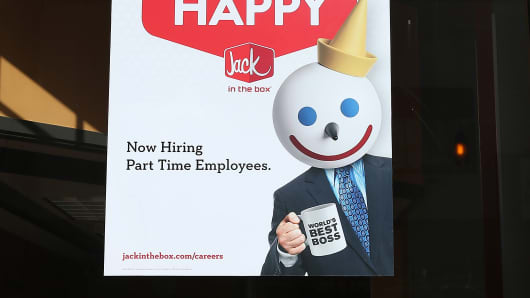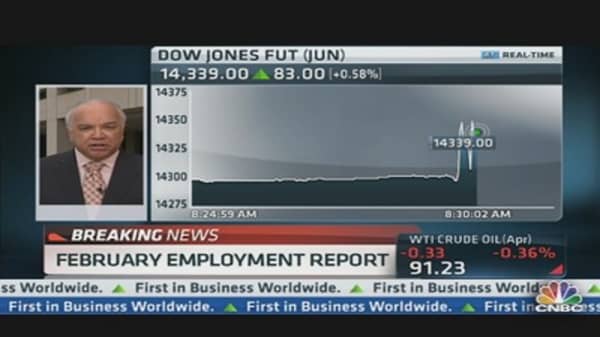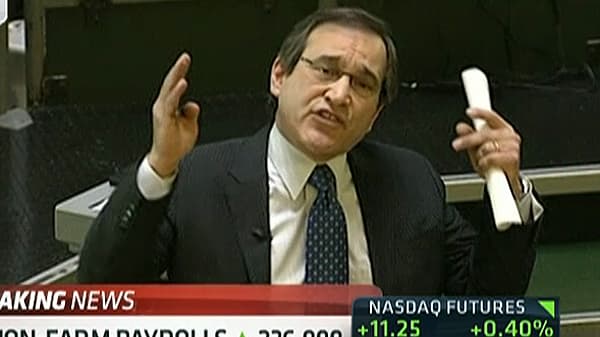Job creation broke out in February, with the economy creating a net 236,000 new jobs as the unemployment rate fell to 7.7 percent.
Private job creation stood at a robust 246,000, finally indicating that the economy may be ready to escape the tight growth range in which it has been held since the financial crisis.
Service industries led the gains with 73,000 new jobs, while construction added 48,000 and health care provided 32,000. Retail also added 24,000.
A separate unemployment measure that includes workers no longer looking for jobs and those working part-time for economic reasons edged lower to 14.3 percent. At the same time, the labor force participation rate, which measures workers and those looking for jobs, also fell, to a 32-year low of 63.5 percent, tied with where it stood in August 2012.
"While on the one hand the pace of job creation is likely to sufficiently justify investors' recent exuberance for driving equity prices higher, the decline in the participation rate and worsening situation for the longer term unemployed reminds us of the challenges facing the labor market," said Andrew Wilkinson, chief economic strategist at Miller Tabak in New York.






